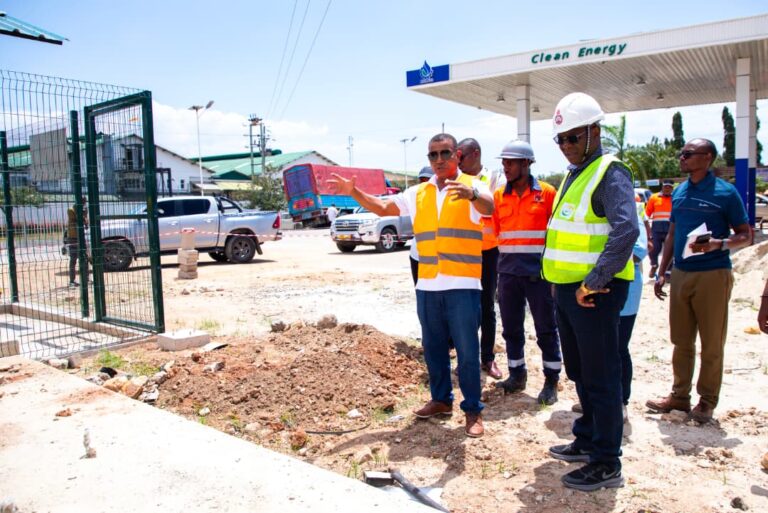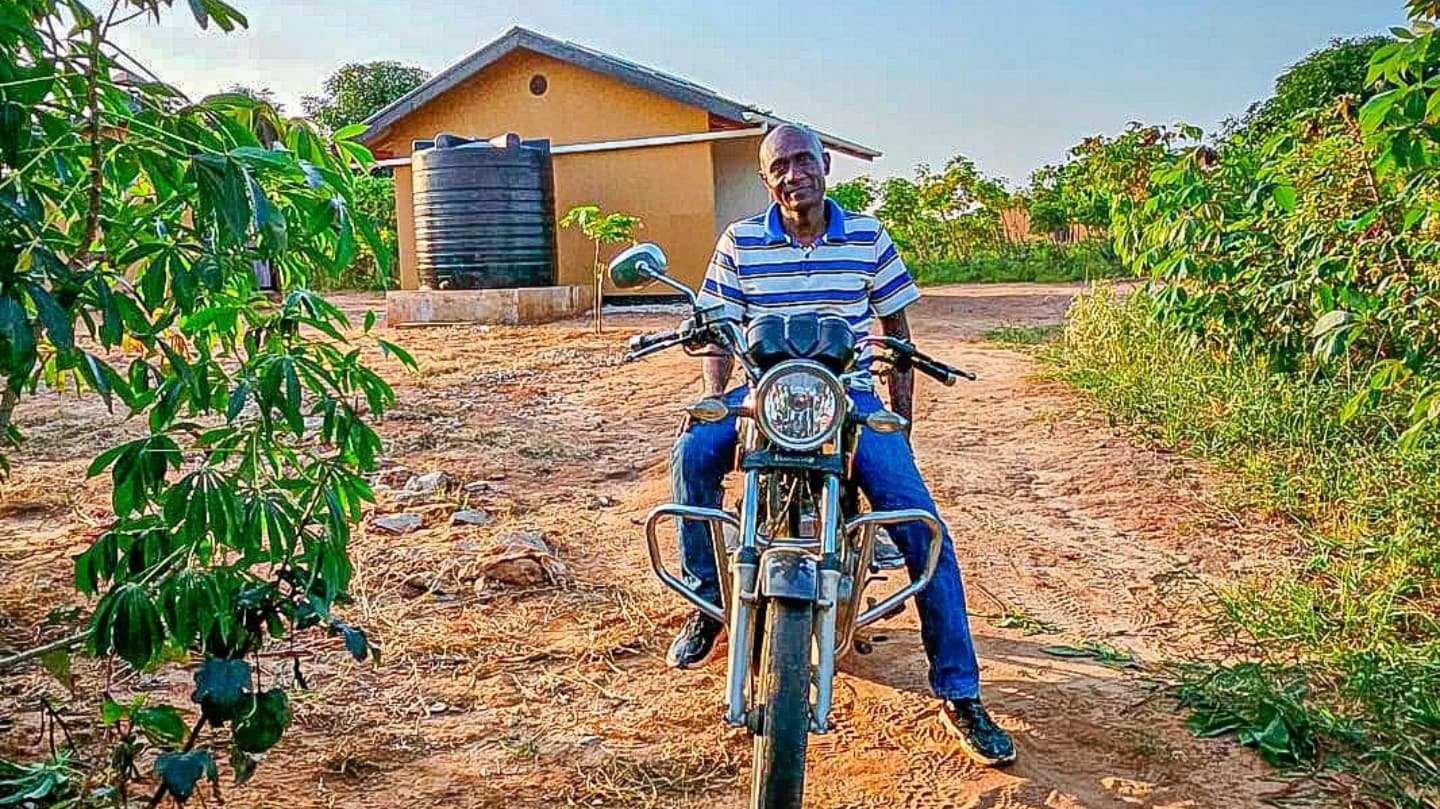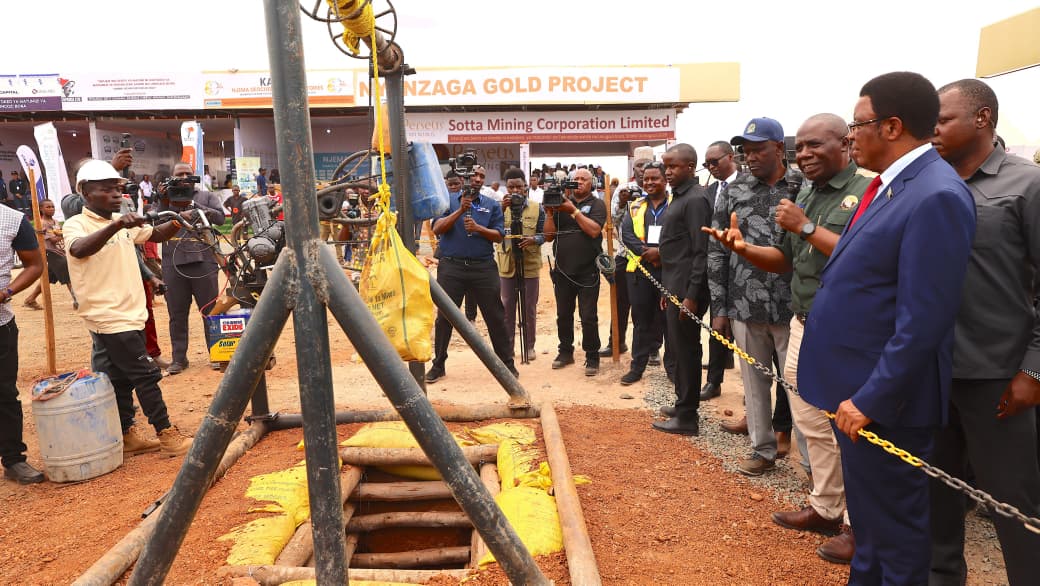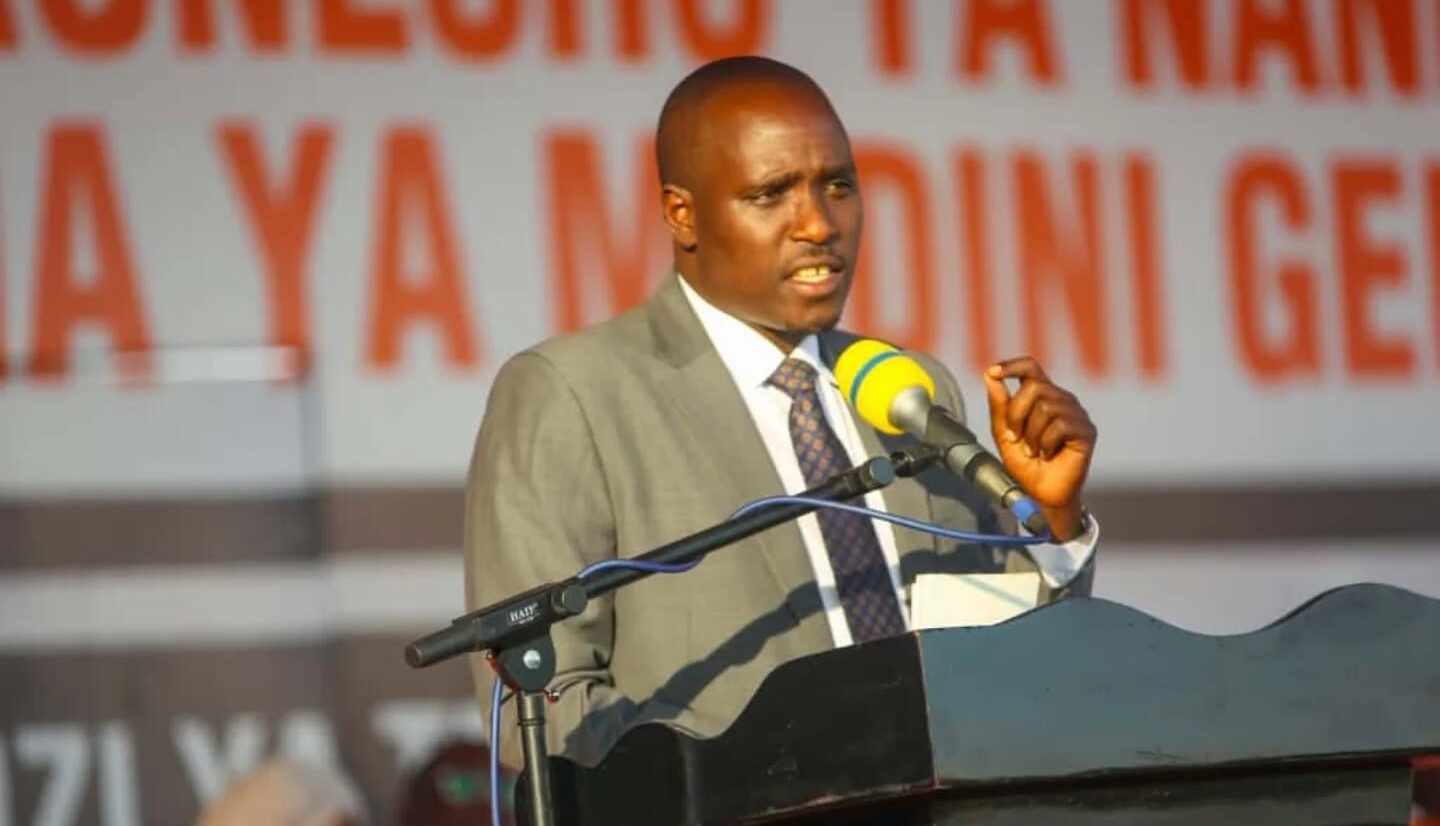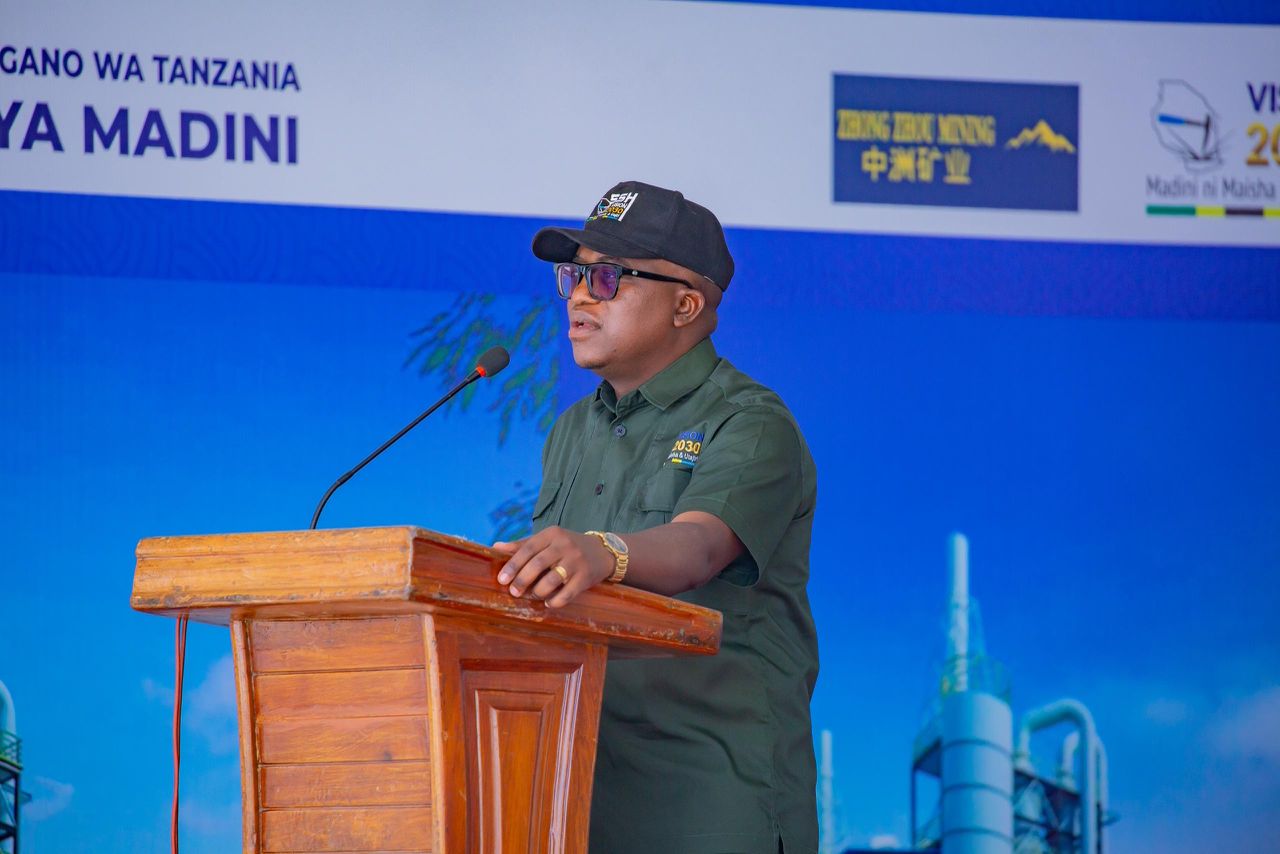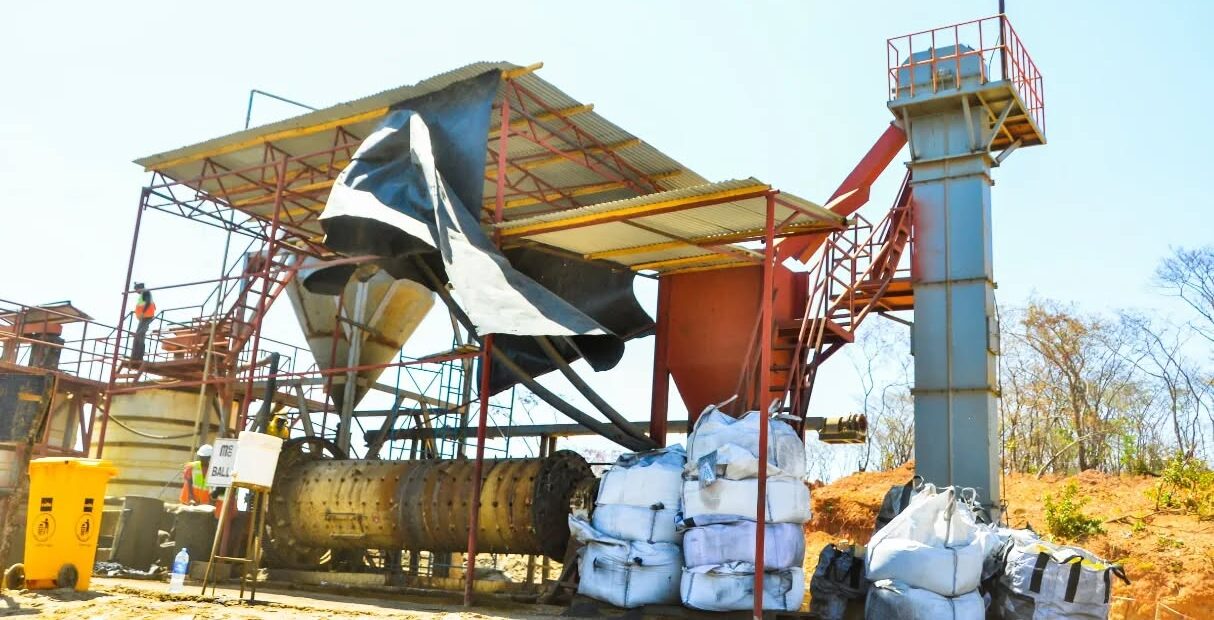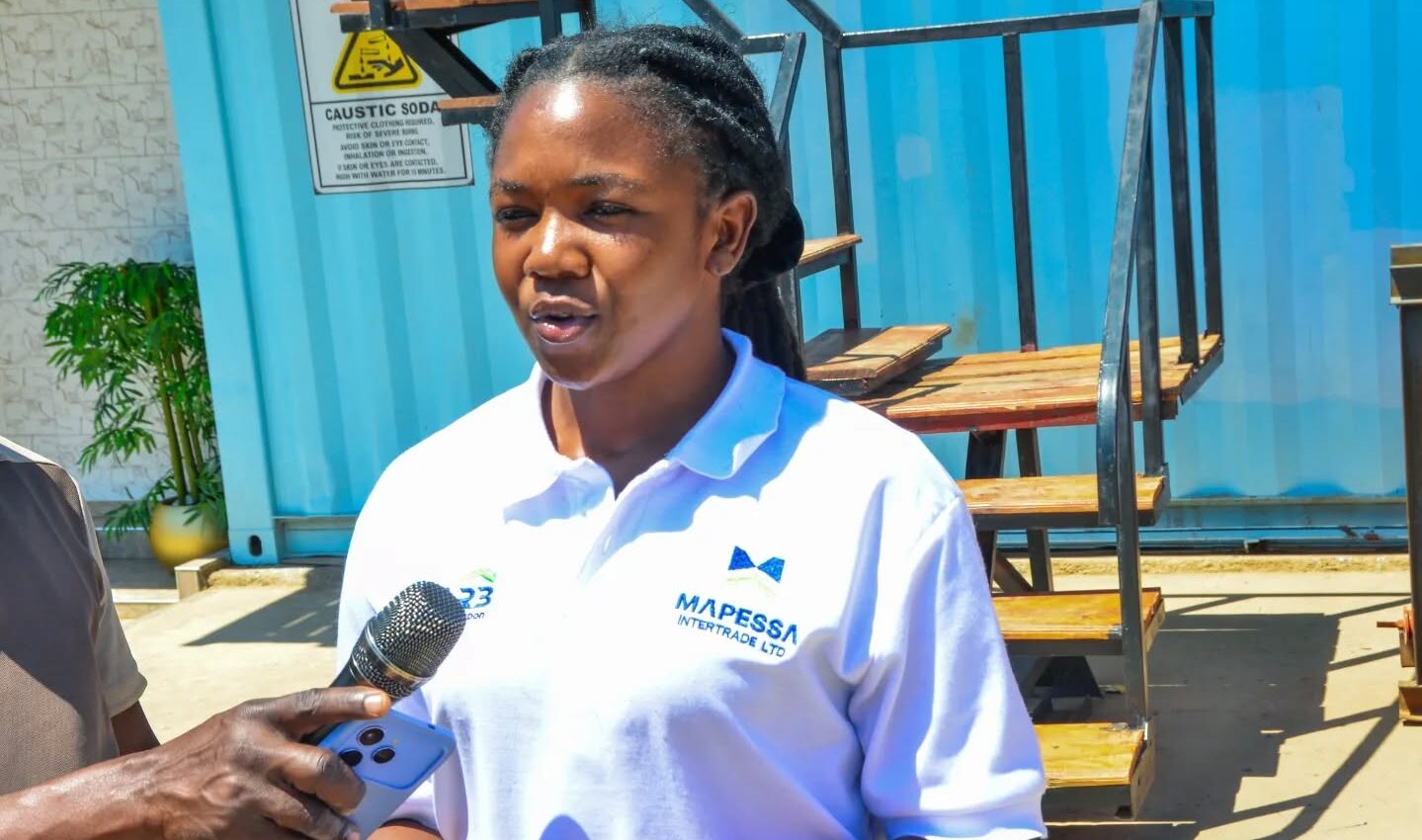Dar es Salaam. Tanzania’s drive to expand compressed natural gas (CNG) infrastructure is maturing from a series of pilot initiatives into a structured national programme.
The government is expanding infrastructure, fast-tracking permits for new filling stations, and preparing to convert its own fleets from petrol and diesel to gas.
During an inspection tour of ongoing projects in Dar es Salaam, the Deputy Permanent Secretary responsible for Oil and Gas, Dr James Mataragio, further elaborated on the implementation agenda.
In addition to faster approvals for CNG stations, there would also be active coordination among regulators and environmental authorities, and targeted outreach to financiers to unlock capital for last-mile infrastructure.
The CNG facilities currently under development include Tegeta (Puma), Goba (BQ and Tanzania State Natural Gas), Mwenge (Enego Energies), Africana (Tan Health), and Muhimbili (TPDC).
These stations form a first wave intended to demonstrate commercial viability and set technical benchmarks.
The Puma Tegeta site, touted to be the largest of its kind in Dar es Salaam and the wider continent with an anticipated capacity of 6.7 million cubic feet per day, has become a bellwether for what scale could look like if permitting, financing and demand move in tandem.
Practical transition, not instant reinvention
Across Africa, the energy transition is unfolding as a sequence of pragmatic substitutions rather than an overnight reinvention of mobility.
Several countries have prioritised CNG for urban transport because it delivers immediate air-quality benefits and fuel-cost savings while building skills and infrastructure that are transferable to future low-carbon technologies.
North African economies have pushed ahead with large conversion programmes; East Africa is testing CNG for public buses and fleet applications; and gas-rich neighbours are exploring regional value chains that can stabilise supply.
Tanzania’s approach fits this “transitional realism.”
Domestic natural gas has long been part of the power mix, and leveraging it for transport offers macroeconomic gains through reduced fuel imports, improved balance of payments and greater resilience to oil price shocks.
In congested cities, the air-quality dividend can be felt quickly, especially if early adoption targets high-mileage fleets such as buses, taxis, ride-hailing vehicles and government transport.
For a logistics-dependent economy such as Tanzania, marginal reductions in fleet operating costs can ripple across supply chains, influencing food prices, construction inputs and manufactured goods.
Policy architecture: speed with standards
Dr Mataragio’s emphasis on “fast-tracked” permits addresses a long-standing investor concern: time.
CNG stations require coordinated approvals for land use, safety, pressure systems, metering and environmental safeguards.
A predictable timeline reduces financing costs and makes project cash flows bankable.
Yet speed must be matched by standards.
The role of the Energy and Water Utilities Regulatory Authority (EWURA) and the National Environment Management Council (NEMC) is pivotal in ensuring that designs, compressors, storage cascades and dispensers meet rigorous safety codes, that operator training is verifiable, and that emergency response protocols are in place.
Technical integrity extends to conversion kits.
Poor-quality or improperly installed kits undermine consumer confidence and can jeopardise safety.
Clear homologation standards, accreditation of installers, periodic inspections and insurance recognition will be essential to build a credible market.
As the network expands beyond Dar es Salaam, regulators may also need to consider calibrated tariff frameworks for gas delivered to CNG hubs, transparency in pricing formulas, and consumer protection measures that maintain the price advantage of CNG over petrol and diesel while allowing investors to recover costs.
Financing the build-out: crowding in local capital
The Ministry of Energy’s open call to banks and other financial institutions reflects a broader shift in Tanzania’s investment climate: local currency financing is increasingly seen as the bridge between infrastructure ambition and delivery.
For CNG, capital expenditures are front-loaded, compressors, storage modules, dispensers, and pipeline connections, while revenues accrue over time as vehicle throughput builds.
Project finance structures that blend bank loans with vendor financing, equipment leases and, where appropriate, development-finance guarantees can reduce risk.
Green finance instruments are also relevant.
Although CNG is a fossil fuel, projects that verifiably cut local air pollutants and reduce carbon intensity compared with diesel may qualify for sustainability-linked loans if borrowers commit to performance targets (for example, uptime, certified emission reductions, or a share of supply dedicated to public transport).
Transparent measurement, reporting and verification will be necessary.
In parallel, establishing dedicated credit lines for certified workshops and conversion centres can accelerate the availability of trustworthy services, thereby generating demand for station operators.
Demand first: fleets as anchor customers
CNG economics work best when station throughput is predictable.
That favours fleet customers bound by route schedules and centralised fueling, public buses, municipal vehicles, corporate fleets, logistics operators and ride-hailing partners.
The government’s intention to begin adopting CNG vehicles within its own fleet creates an anchor demand signal.
A structured conversion plan, prioritising high-mileage departments, setting annual targets, and bundling procurement to achieve lower unit costs, can stabilise early-stage cash flows for station investors.
Public transport offers a second lever.
If a portion of the Dar es Salaam bus fleet or feeder services commits to CNG under multi-year supply agreements, distributors can finance capacity with greater confidence.
Such agreements should be paired with maintenance contracts to ensure compressors, dispensers and conversion kits remain within warranty performance.
Where routes are fixed, “mother-daughter” logistics—loading high-pressure tube trailers at a primary (mother) station and delivering to satellite (daughter) stations—can extend reach ahead of permanent pipeline connections.
Credible gains, managed risks
From an environmental standpoint, the case for CNG rests on three pillars.
First, tailpipe emissions: CNG typically emits fewer particulates and lower nitrogen oxides (NOx) than diesel, improving urban air quality.
Second, lifecycle greenhouse gases: relative to petrol and diesel, CNG can deliver a reduction in CO₂-equivalent emissions—provided that methane leakage is tightly controlled. Third, noise: gas engines reduce acoustic pollution in dense corridors.
Methane management is therefore central. Small leaks across compressors, hoses and storage units can erode or even negate climate benefits.
Regulators and operators should adopt rigorous leak detection and repair (LDAR) protocols, specify modern seals and connectors, and enforce maintenance schedules.
Over time, integrating renewable gas—captured from landfills, wastewater plants or agricultural residues—could deepen decarbonisation, but that requires feedstock mapping, interconnection standards and guarantees of origin. For now, the priority is disciplined operations that lock in the expected environmental dividend.
Local content and skills: building a durable ecosystem
The projects currently under construction are being executed by local contractors, a notable early step towards domestic capability.
Sustaining that trajectory calls for targeted skills development: high-pressure systems, industrial electrics, metrology, safety auditing, and data telemetry for station performance.
Technical and vocational institutes can partner with operators to create certified courses; original equipment manufacturers can provide train-the-trainer programmes; and insurers can reward certified competence with favourable premiums.
A visible pipeline of projects will help retain trained technicians and reduce downtime across the network.
Local fabrication is another frontier. While core compressor units and advanced valves will continue to be imported, fabrication of skids, shelters, piping spools and mounting assemblies can be localised, lowering costs and shortening lead times. When combined with standardised station designs, localisation can compress construction schedules and simplify spare-parts logistics.
In the near term, concentrating stations along high-traffic corridors in Dar es Salaam and extending to key logistics axes, such as routes linking the port, industrial estates and inland depots, will maximise utilisation.
As daughter stations mature and demand broadens, permanent connections and regional hubs can follow.
This corridor logic should be synchronised with major infrastructure projects, ports, logistics centres and industrial parks, so that gas availability becomes a planning parameter rather than an afterthought.
Clear message
The government’s message is clear: CNG is a here-and-now solution to cut transport costs, improve air quality and strengthen energy security while laying foundations for a broader low-emission future.
The call to lenders seeks to seed a bankable pipeline and the intention to shift government fleets to gas offers an anchor that can de-risk early private investment.
Delivery, however, will rest on operational discipline: rigorous standards, credible training, reliable maintenance and transparent pricing.
If those building blocks hold, the stations rising in Tegeta, Goba, Mwenge, Africana and Muhimbili will mark more than construction milestones; they will signal that Tanzania’s energy transition is moving off the page and onto the forecourt, one certified fill at a time.

